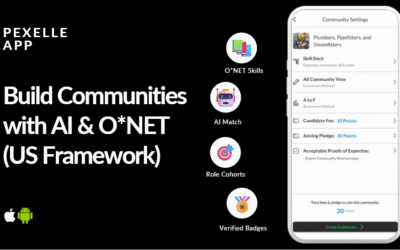The Role of AI in Enhancing Cybersecurity: Emerging Threats and Solutions

In the ever-evolving world of cybersecurity, AI is playing an increasingly significant role in defending against cyberattacks. As the digital landscape expands, new threats emerge, becoming more sophisticated and harder to detect. The traditional methods of defense, which often rely on predefined rules and signatures, are no longer sufficient to address these evolving challenges. AI, with its ability to process large volumes of data, recognize patterns, and adapt to new threats in real-time, is proving to be a game-changer in the fight against cybercrime.
Emerging Cybersecurity Threats
- Ransomware Attacks
Ransomware remains one of the most prevalent and destructive threats in the cybersecurity world. Attackers often use social engineering tactics to trick users into downloading malicious software that encrypts their data, demanding a ransom in exchange for a decryption key. These attacks are becoming more targeted and sophisticated, leveraging artificial intelligence to optimize the spread of malware, making it harder to detect and prevent. - Advanced Persistent Threats (APTs)
APTs involve long-term, stealthy campaigns aimed at infiltrating networks to steal sensitive information. These attacks can go undetected for months or even years, often using custom-built malware and tools to avoid detection. Traditional methods of defense are not equipped to handle the dynamic nature of APTs, and this is where AI comes into play. By continuously monitoring network traffic and analyzing behavior, AI systems can detect anomalies indicative of an APT. - Phishing and Social Engineering
Phishing attacks have become more sophisticated in recent years, leveraging AI to create highly convincing fake emails, websites, and messages that trick users into disclosing sensitive information. These attacks are harder to identify as they mimic real communication patterns. AI’s ability to analyze communication behavior and identify subtle differences in email structures can help detect phishing attempts before they succeed. - Zero-Day Vulnerabilities
Zero-day vulnerabilities are flaws in software or hardware that are unknown to the vendor and therefore unpatched. These vulnerabilities can be exploited by attackers to gain unauthorized access to systems. AI can help by quickly analyzing new code, identifying vulnerabilities, and detecting unusual behavior that might indicate an exploit, even before it’s officially recognized by security agencies.
AI Solutions in Cybersecurity
- Machine Learning for Threat Detection
Machine learning (ML) algorithms, a subset of AI, can analyze vast amounts of data to identify patterns that indicate potential threats. By continuously learning from new data, ML models can improve their accuracy over time, making them highly effective in detecting novel threats. For example, ML-based intrusion detection systems (IDS) can identify unusual network behavior, flagging potential breaches before they cause significant harm. - Automated Threat Response
AI can automate the response to threats, reducing the time it takes to mitigate attacks. By integrating AI into Security Information and Event Management (SIEM) systems, organizations can automatically block malicious IP addresses, quarantine infected files, or trigger additional authentication measures when a threat is detected. This rapid response minimizes the window of opportunity for attackers. - Behavioral Analysis and Anomaly Detection
AI-powered behavioral analytics tools can establish a baseline of normal user and system behavior. When a deviation from this baseline occurs, such as an employee accessing files they don’t normally interact with, AI can flag it as suspicious. This method is particularly effective in detecting insider threats and unusual actions that might signal a cyberattack in progress. - AI-Driven Malware Analysis
AI can be used to detect new strains of malware by analyzing its behavior rather than relying on traditional signature-based detection. By monitoring the way malware behaves within a system—such as its ability to encrypt files, send data to external servers, or manipulate system processes—AI can quickly identify it even if the malware is previously unknown. - Enhanced Authentication Systems
AI can improve authentication protocols by introducing more advanced forms of biometric recognition, such as facial recognition, voice recognition, or behavioral biometrics. These AI-driven systems can provide multi-layered security, making it more difficult for attackers to impersonate legitimate users. - AI-Powered Threat Intelligence
AI can process and analyze vast amounts of threat data from multiple sources, such as social media, dark web forums, and malware reports. By using natural language processing (NLP) and machine learning, AI systems can quickly identify emerging threats and provide real-time intelligence to cybersecurity teams, allowing them to proactively defend against new attack methods.
Challenges and Ethical Considerations
While AI brings significant advantages to cybersecurity, its implementation is not without challenges. One major concern is the potential for adversaries to use AI for malicious purposes. Just as defenders can use AI to detect and prevent cyberattacks, attackers can also use AI to automate attacks, bypass defenses, and optimize their methods.
Additionally, there are ethical concerns surrounding the use of AI in cybersecurity, particularly when it comes to data privacy. AI systems need large volumes of data to train and improve, which may include sensitive personal information. Ensuring that AI-powered cybersecurity solutions comply with privacy regulations and are not misused is a critical consideration for organizations adopting these technologies.
Conclusion
The role of AI in cybersecurity is undeniable. As cyber threats grow more sophisticated, AI offers powerful solutions to detect, prevent, and respond to attacks in real-time. From machine learning models that identify new threats to automated response systems that mitigate risks instantly, AI is revolutionizing the way cybersecurity professionals defend against attacks. However, with these advancements come new challenges, including the potential misuse of AI by cybercriminals and ethical concerns regarding data privacy. Despite these issues, AI’s ability to enhance cybersecurity makes it an indispensable tool in the ongoing fight against cyber threats.
Source : Medium.com




